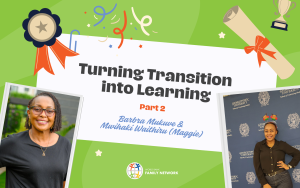Domestic Abuse Tips - Where to find help
In an Emergency situation, involving immediate physical danger, CALL 911. Say that you are reporting a domestic violence incident. The police will know how to respond.
The Domestic Violence Hotline—1-800-799-SAFE (1-800-799-7233)— is staffed 24 hours a day by trained counselors who can provide crisis assistance and information about shelters, legal advocacy, health care centers and counseling.
Domestic Violence Units
All of the jurisdictions in the Washington metropolitan area have units designed especially to provide help and guidance to victims of domestic violence. The complete list of the resources in the Washington area can be found on pages 4.2 and 4.3 of the WBFN manual “Planning Makes a Difference”. The facilities in Prince William and Fairfax Counties require appointments, but a number of the others work with “walk-ins”, which means that no appointment is necessary. If a victim is uncertain about which facility is in her/his area, s/he can call or visit the DC Domestic Violence Intake Center, DC Superior Court, 500 Indiana Avenue N.W. (202-879-0152). If the victim is not a resident of DC, or if the abuse took place somewhere other than in DC, the staff of the Domestic Violence Intake Center (DVIC) will refer victims to the appropriate resources in their own communities.
All of the jurisdictions in the Washington metropolitan area have units designed especially to provide help and guidance to victims of domestic violence. The complete list of the resources in the Washington area can be found on pages 4.2 and 4.3 of the WBFN manual “Planning Makes a Difference”. The facilities in Prince William and Fairfax Counties require appointments, but a number of the others work with “walk-ins”, which means that no appointment is necessary. If a victim is uncertain about which facility is in her/his area, s/he can call or visit the DC Domestic Violence Intake Center, DC Superior Court, 500 Indiana Avenue N.W. (202-879-0152). If the victim is not a resident of DC, or if the abuse took place somewhere other than in DC, the staff of the Domestic Violence Intake Center (DVIC) will refer victims to the appropriate resources in their own communities.
The objective of all the domestic violence units is to help the victim get away from the abuse. Although the victim’s situation is miserable, s/he may be afraid to ask for help because s/he believes the abuser will go to jail. The staff of the domestic violence unit will explain the differences between two types of court actions, a “civil action” and a “criminal action”. (Sometimes courts in different areas use different words to describe the same actions. In this article the terms used by courts in the District of Columbia will be used.)
A civil action is brought by the victim of domestic violence. The victim asks the court to issue a Civil Protection Order (CPO) which tells the abuser to stop threatening her or him. It can take about two weeks to get a CPO. If the victim is in immediate danger, s/he may ask the court to issue a Temporary Protection Order (TPO) to protect her/him up until the time of the hearing to grant the CPO. It is important to note that trying to get a TPO or CPO against someone is not the same as making a criminal complaint. Even if the victim is successful in getting a protection order, the abuser will not have a criminal record or go to jail.
A criminal action in a domestic violence case is not brought by the victim, but by government prosecutors, based on a police investigation of the victim’s complaint that a person has committed a criminal act.
When a victim goes to a domestic violence unit, someone from the unit’s staff will ask for details of the situation and help to complete the necessary forms. The staff of the domestic violence unit will explain the steps the victim must take in order to get a protection order and provide information about the court procedures. If the victim is in immediate danger, s/he will be allowed to see the judge the same day to request the TPO, which in some areas is called a Temporary Restraining Order (TRO) or a Non-contact Order. The unit staff will also assist victims to get other help they may need, such as child support, medical treatment, emergency housing, legal assistance and so on.






